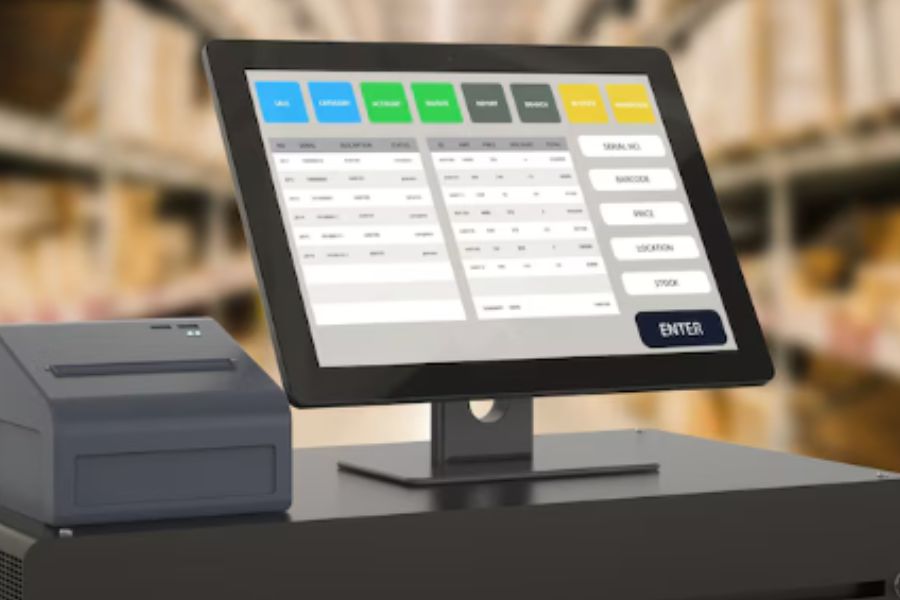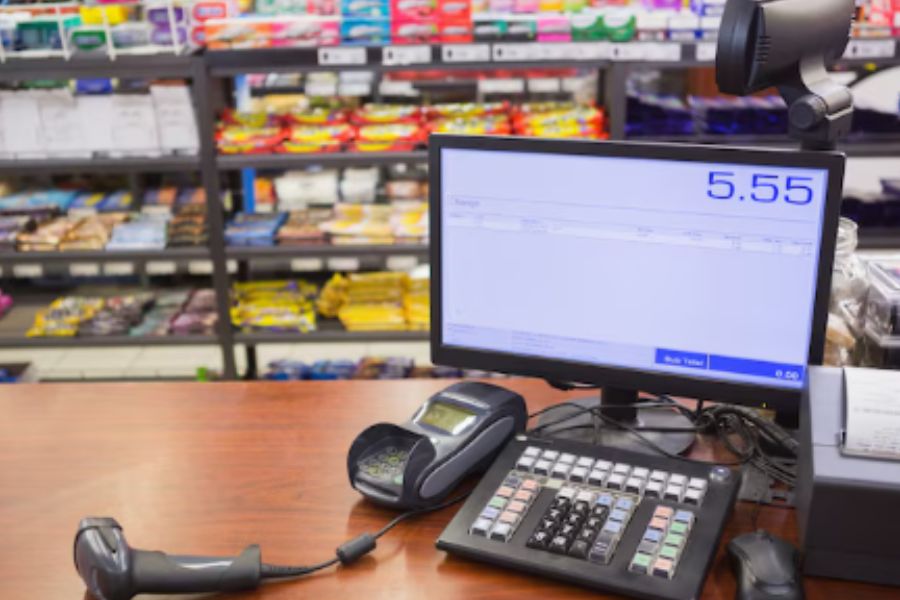Grocery stores operate on thin profit margins, yet they generate substantial revenue through strategic pricing, product placement, and customer engagement tactics. While selling food and household essentials may seem straightforward, grocery retailers use a combination of pricing strategies, supplier agreements, and value-added services to maximize profits.
In this article, we’ll delve into the key ways grocery stores make money, uncovering the behind-the-scenes mechanisms that fuel the industry’s profitability.
Exploring The Primary Income Sources For Grocery Stores
Grocery stores generate revenue primarily through selling various products, encompassing groceries, fresh produce, and household essentials. While these sales form the core income stream, these establishments also explore additional avenues for financial growth. Let’s delve into these supplementary sources of revenue.
Product Sales
Product sales in the realm of grocery stores are intricately tied to the cyclical and habitual nature of consumer behavior. These establishments thrive on the perpetual turnover of goods, with customers engaging in a routine replenishment of their pantries and household supplies. It is this reliable and frequent patronage that forms the bedrock of the grocery retail sector’s sustained financial success.
The diverse and extensive product selection offered by grocery retailers plays a pivotal role in capturing the attention and loyalty of consumers. Ranging from essential food items to an array of cleaning supplies, the broad spectrum of products ensures a constant and diverse stream of purchases.
One of the fundamental aspects contributing to the resilience of grocery stores is the necessity-driven demand for their products. Unlike discretionary purchases, groceries are an indispensable part of daily life, making them immune to the volatility that may affect other retail sectors. The recurrent need for items like fresh produce, dairy, grains, and toiletries ensures a steady and predictable flow of customers, regardless of economic fluctuations.
Furthermore, the grocery shopping experience has evolved with time, incorporating elements that enhance customer satisfaction and convenience. From online platforms offering home delivery services to in-store innovations like self-checkout kiosks, grocery retailers continually adapt to meet the evolving preferences of their clientele.
Additional Revenue Channels
Beyond the primary product sales, grocery stores diversify their revenue streams through various means:
- In-Store Services: Offering in-store services enhances customer convenience and provides an additional revenue source. For instance, many grocery stores incorporate dedicated areas for prepared foods, allowing shoppers to grab a ready-to-eat meal while browsing. Customers availing these in-store services often spend more time shopping and, in turn, contribute to increased spending.
- Partnerships: Collaborating with local vendors or well-known brands enables grocery stores to introduce exclusive products, attracting a broader customer base. Notable examples include partnerships like Grocery Outlet teaming up with Uber Eats to provide delivery services from select stores. Such collaborations not only benefit the store but also offer customers time-saving conveniences.
- E-Commerce: Embracing online platforms, many grocery stores have established websites and apps, facilitating convenient home shopping. Online sales serve as an additional revenue stream, appealing particularly to customers who prefer home delivery or click-and-collect services. This adaptation to e-commerce provides grocery stores with a new avenue for revenue generation, leveraging the accessibility of digital platforms.
Strategies For Grocery Store Profitability Through Sales And Discounts
In a June 2023 survey in the United States, approximately 33% of respondents indicated an average spending range of 101 to 200 U.S. dollars during their grocery shopping. Merely three percent reported spending less than 20 dollars, whereas 17 percent acknowledged spending more than 200 dollars.

That proves partly that grocery stores always use many strategies to attract and retain customers, aligning pricing strategies with consumer behaviors to stay competitive and profitable in the dynamic retail landscape.
Profit Margins On Regularly Priced Items
Consider bread a typical example of how grocery stores profit from regular-priced items. These stores procure bread from suppliers or bakeries at a wholesale rate. The disparity between the wholesale and retail prices of bread constitutes the profit margin for the grocery store.
Grocery stores offset this through high sales volume by operating on slim profit margins, especially for essential items like bread. Despite the lower profit per unit, the cumulative profit derived from the overall sales volume becomes advantageous.
Influence Of Promotional Tactics On Profitability
Promotional strategies play a pivotal role in driving sales and influencing profitability for grocery stores. Discounts and promotions on specific products attract customers, fostering increased sales volume during promotional periods.
Although these strategies may decrease profit margins on particular items, the overall impact on profitability can be positive. The augmented sales volume resulting from promotional activities can counterbalance the reduction in margins, leading to higher total profits.
Striking A Balance Between Sales And Profit Margins
Maintaining a balance between sales and profit margins is crucial. Excessive discounting poses a risk to profit margins and long-term sustainability. Grocery stores must carefully evaluate the effects of promotions on profitability, considering factors like discount costs, impact on sales volume, and potential shifts in customer behavior.
Pricing strategies should be designed to attract customers while ensuring reasonable profit margins. Through adept management of pricing, strategic promotions, and a holistic consideration of overall profitability, grocery stores can optimize revenue potential while catering to the needs of their customer base.
Assessing The Impact Of Bulk Sales On Grocery Store Profits
Grocery stores can boost sales and enhance profitability by providing products in larger quantities, leading to increased turnover within shorter timeframes. This strategy generates more revenue and fosters repeat business as bulk buyers often become regular customers, ensuring a consistent flow of sales for the store.
Furthermore, the sale of products in bulk enables grocery stores to capitalize on cost savings. The economies of scale they enjoy often result in more favorable wholesale prices. Additionally, bulk purchases reduce the frequency of restocking, leading to savings in logistical and operational costs associated with inventory management.
Effectively managing bulk sales involves the implementation of various strategies:
- Adequate Storage: Ensuring sufficient storage space is crucial to accommodate larger quantities of products.
- Inventory Management: Proper inventory management is essential to prevent issues like overstocking or potential wastage.
- Sales Pattern Monitoring: Grocery stores need to monitor sales patterns to determine optimal stocking levels.
- Diverse Product Offering: Offering a diverse range of products in bulk caters to varied customer preferences, further driving bulk sales and overall profitability.
- Incentivizing Programs: Introducing loyalty programs or discounts targeting bulk purchases serves as another key strategy. Such offers incentivize customers to choose larger quantities, contributing to increased sales.
In summary, the adoption of bulk sales strategies not only boosts immediate revenue but also enhances long-term profitability for grocery stores.

Factors Influencing Grocery Store Profitability
Achieving profitability in the grocery store industry depends on navigating a dynamic interplay of influential factors. The four primary pillars shaping this landscape are foot traffic, demographics, competition, and convenience/accessibility. Let’s delve into how each of these elements plays a pivotal role in determining the success of a grocery store.
Foot Traffic
Stores situated in areas with high pedestrian or vehicular traffic have a greater likelihood of attracting a larger customer base. The increased foot traffic not only enhances visibility but also expands exposure, leading to higher sales volume for grocery stores in such locations.
Demographics
Demographics are a pivotal factor in determining location-based profitability. For instance, a grocery store in an area with numerous families featuring young children might prioritize offering an extensive range of baby products. Similarly, a store near a retirement community might focus on stocking items popular among seniors, aligning with the local demographic needs.
Competition
The presence of competing grocery stores in proximity can significantly impact a store’s profitability. Intense competition may trigger price wars, potentially resulting in reduced profit margins. Conversely, being the sole grocery store in an area can offer a competitive advantage, fostering customer loyalty over time.
Convenience And Accessibility
Customers prioritize convenience and tend to favor stores that are easily accessible and in close proximity to their homes or workplaces. Customers save time and effort with a convenient location. Key considerations include ample parking facilities, proximity to public transportation, and easy store navigation. These factors play a crucial role in influencing customers’ decisions to patronize a particular grocery store.
Grocery stores can optimize their financial performance in dynamic retail environments by aligning products and services with the needs of the local population, navigating competitive landscapes, and providing a convenient shopping experience.
How Can ConnectPOS Help Your Grocery Stores Increase The Margins?
ConnectPOS, a comprehensive point-of-sale (POS) solution, can significantly contribute to boosting the margins of your grocery store through several key features and functionalities:
- Efficient Inventory Management: ConnectPOS streamlines inventory management, allowing grocery store owners to track stock levels in real-time. By minimizing overstock or stockouts, businesses can reduce the costs associated with excess inventory and lost sales opportunities, thus optimizing profit margins.
- Automated Pricing Strategies: The system enables dynamic pricing and promotional strategies. Grocery stores can easily implement discounts, loyalty programs, and promotional campaigns, attracting more customers and stimulating sales without compromising profitability.
- Data-Driven Insights: ConnectPOS provides in-depth analytics and reporting tools. By analyzing customer purchasing patterns, popular products, and seasonal trends, grocery store owners can make informed decisions on pricing, promotions, and inventory management, ultimately maximizing profits.
- Integrated Loyalty Programs:Building customer loyalty is essential for sustained profitability. ConnectPOS allows grocery stores to implement and manage customer loyalty programs seamlessly. Offering rewards, discounts, or special promotions to repeat customers can increase customer retention and drive higher margins over time.
- Multi-Channel Selling: With the rise of omnichannel retail, ConnectPOS facilitates seamless integration across various sales channels, including online platforms. This not only expands the customer base but also opens up additional revenue streams, contributing to overall margin growth.
- Enhanced Customer Experience: A positive shopping experience can increase customer satisfaction and loyalty. ConnectPOS enables quick and efficient transactions, reducing wait times at the checkout. Satisfied customers are more likely to return, contributing to long-term profitability.
In summary, ConnectPOS offers a comprehensive set of tools and features that can empower grocery stores POS to optimize various aspects of their operations. By enhancing inventory management, implementing strategic pricing, leveraging data-driven insights, and improving the overall customer experience, ConnectPOS can play a vital role in increasing profit margins for grocery businesses.
FAQs About How Do Grocery Stores Make Money
Dive into this informative section to uncover the answers to commonly asked questions, and discover more deeper behind the grocery retail landscape.
What Factors Influence The Pricing Strategies Adopted By Grocery Stores?
Factors influencing the pricing strategies adopted by grocery stores encompass product costs, competition, customer demand, and profit goals. These strategies often involve market trend analysis, competitor pricing evaluation, and customer perception research to establish value.
What Is The Average Profit Margin For Grocery Stores?
As for the average profit margin for grocery stores, it varies based on factors such as store size, location, competition, and management quality, making it a dynamic metric that differs among establishments.
How Can Grocery Stores Boost Their Profitability?
To enhance profitability, grocery stores can implement diverse strategies. Operational efficiency improvements and effective inventory management contribute to cost reduction. Integrating technology for online sales and delivery, coupled with initiatives like loyalty programs, enhances customer engagement.
Additionally, diversifying revenue streams through value-added services and local vendor partnerships presents opportunities for grocery stores to bolster their financial performance.
Which Product Brings The Highest Profit In A Grocery Store?
Identifying the most profitable item in a grocery store can be subjective, but certain products tend to have higher profit margins. Here are the Top 10 items with notable mark-ups in grocery stores:
- Prepared Foods
- Vitamins
- Body Care Products
- Fresh Coffee
- Reusable Shopping Bags
- Cheese
- Deli Meat
- Produce
- Bulk Foods
- Frozen Foods
However, determining optimal pricing and potential profit for a product can be a complex task in the retail landscape. Various factors come into play when establishing the right balance between pricing and profitability.
How Much Do Grocery Stores Pay For The Goods They Sell?
Grocery stores typically maintain a gross margin ranging from 25-35%, indicating that the expenses associated with acquiring their products generally constitute 65-75% of the retail price.
Conclusion
This article has peeled back the layers, revealing the covert methods that contribute to the financial success of these essential retail establishments. From astute pricing strategies to customer loyalty initiatives, this exploration demystifies the realm where commerce meets consumers, offering a deeper understanding of how grocery stores truly make their money. Contact us to delve deeper into the specifics of this valuable information.



